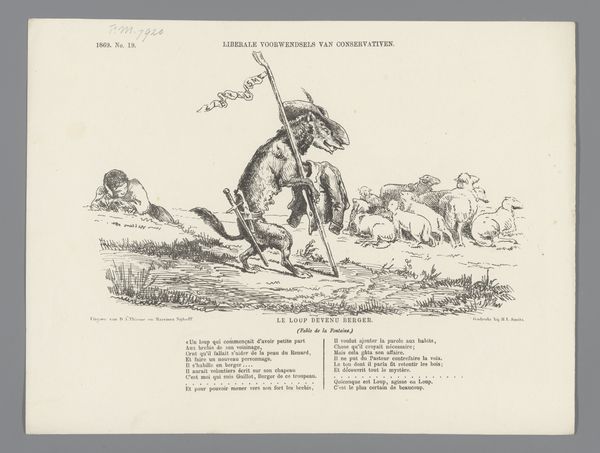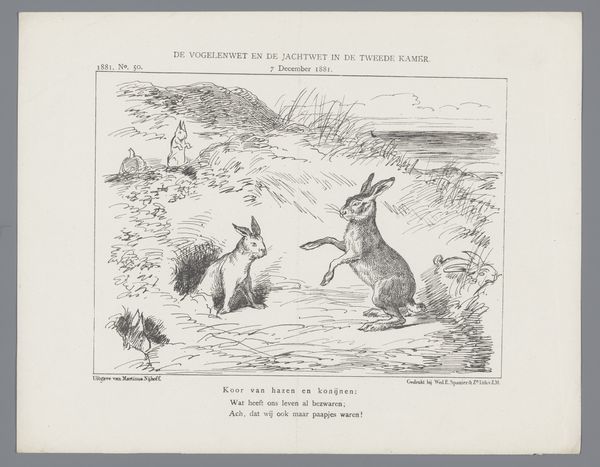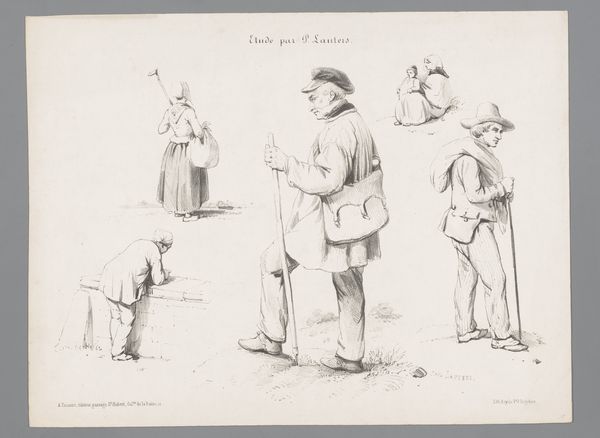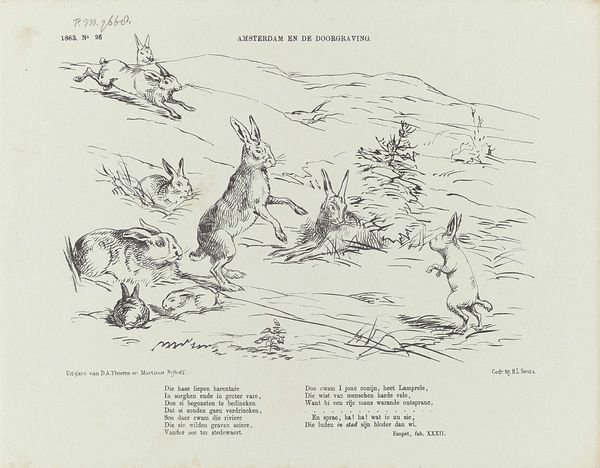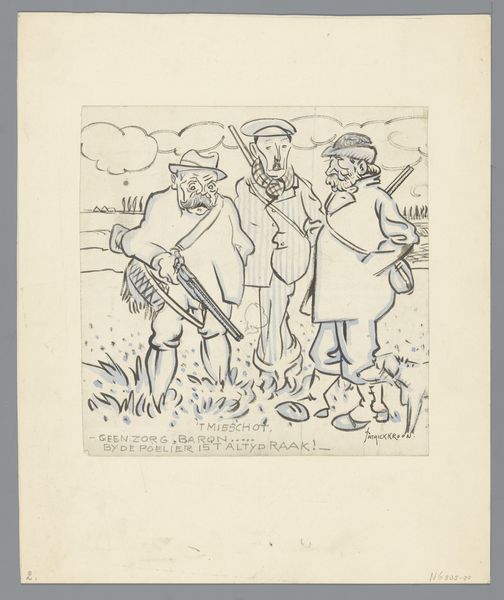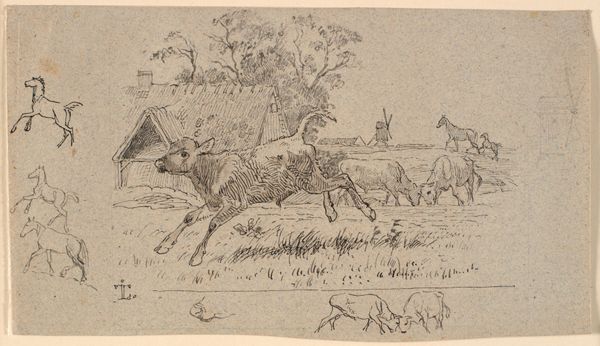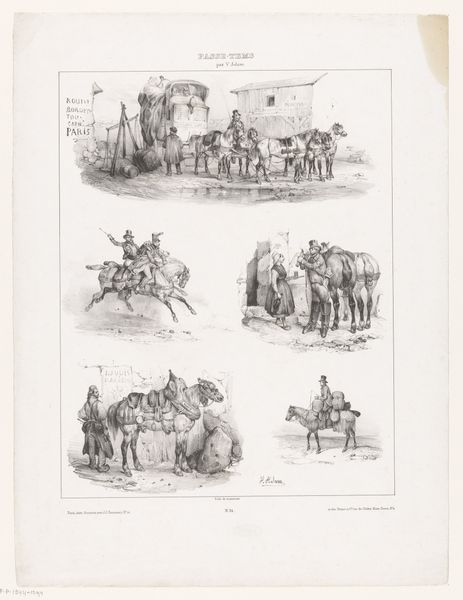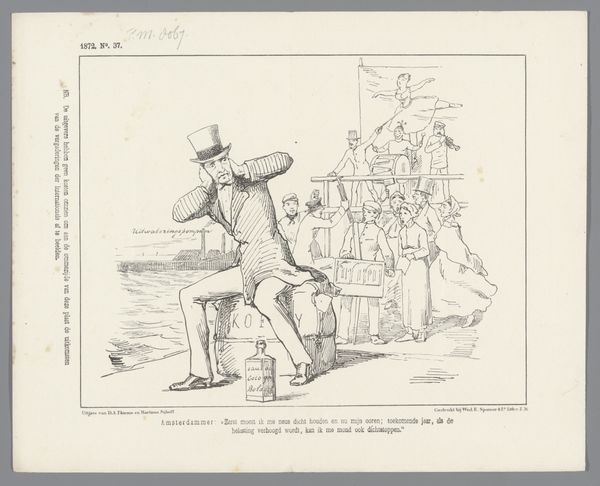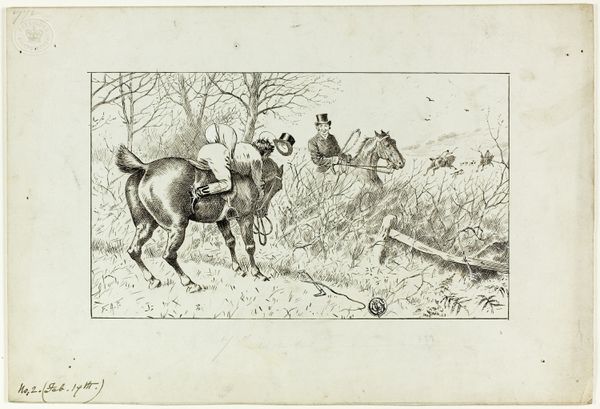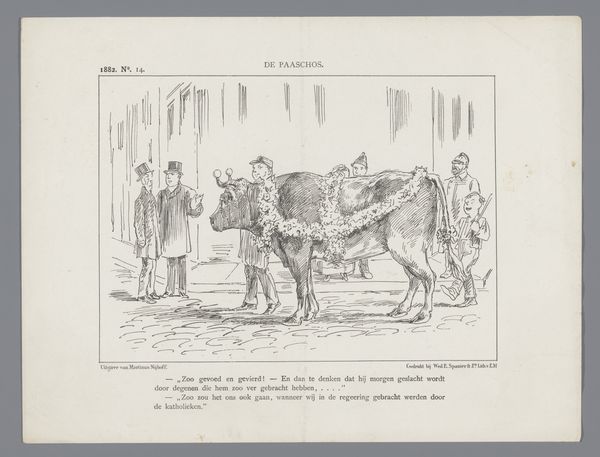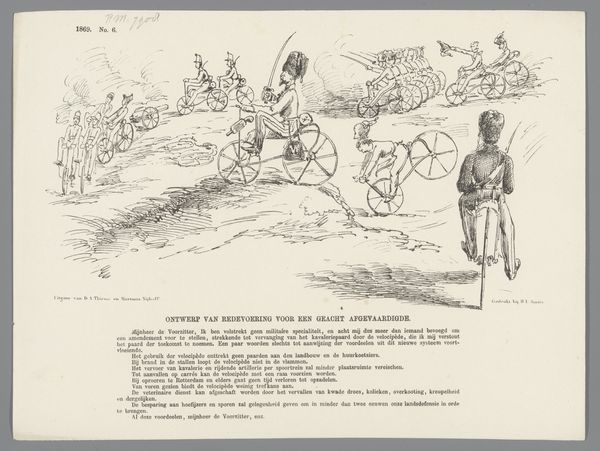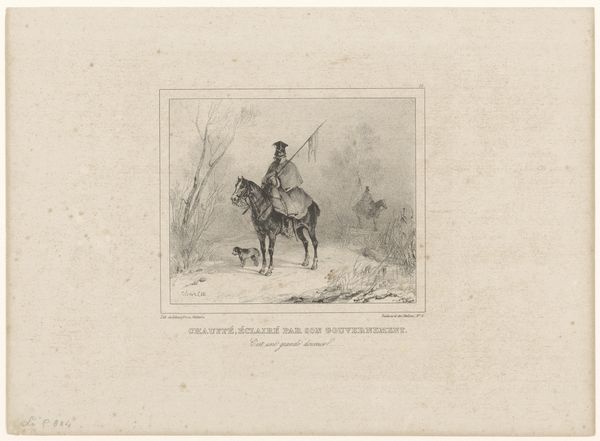
Spotprent op het voorstel ter verandering van de jachtwet, 1873 1873
0:00
0:00
drawing, print, pen
#
drawing
#
comic strip sketch
#
narrative-art
# print
#
pen illustration
#
caricature
#
ink drawing experimentation
#
pen-ink sketch
#
comic
#
pen
#
genre-painting
Dimensions: height 215 mm, width 275 mm
Copyright: Rijks Museum: Open Domain
Editor: Here we have Johan Michael Schmidt Crans' "Spotprent op het voorstel ter verandering van de jachtwet, 1873," a print with pen and ink, seemingly illustrating some kind of meeting. There’s a strange, slightly unsettling feeling to it, as though a children’s story has taken a bizarre political turn. What's your take on this unusual scene? Curator: Well, considered within its historical moment, this image is a potent commentary on power. We see the jachtwet, the hunting law, being challenged, but told through the language of caricature. It reveals the socio-political tensions between the hunters, in this case metaphorically represented by a gamekeeper, and the hunted. Editor: So, the rabbits represent a specific group then, not just animals? Curator: Precisely. Caricature allows for social critique under the guise of humor. Notice how the artist portrays the rabbits in various anthropomorphic roles – chairman, secretary, speaker. How does their depiction, coupled with the imposing figure of the gamekeeper, shape your understanding of the dynamic? Editor: It definitely highlights the power imbalance. The rabbits are almost comical in their attempt at formal organisation, while the gamekeeper looms, impassive and armed. It feels like a comment on the futility of their efforts, perhaps a critique of the political system itself. Curator: Exactly. The print becomes a tool for social commentary, influencing public perception of the law and its impact. And it brings up questions: Who has a voice? Who is silenced? Who benefits from existing power structures? These were vital public issues then. Editor: It's fascinating how a seemingly simple image can unpack so much about the social and political climate of the time. Thanks, it made me think of art's wider societal influence in new ways. Curator: Indeed. Art often acts as a mirror reflecting—and sometimes distorting—the power dynamics of a society. Reflecting on art through a political and historical lens offers vital insights.
Comments
No comments
Be the first to comment and join the conversation on the ultimate creative platform.
